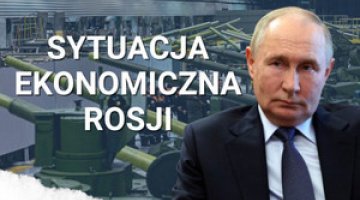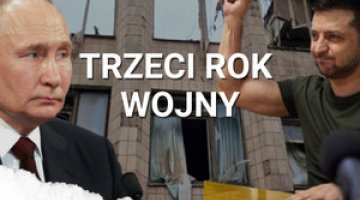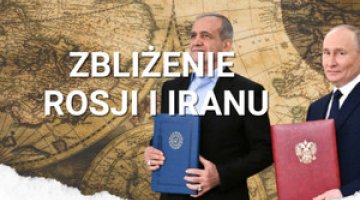Trump calls Putin: positive news for Moscow

On 12 February, US President Donald Trump had a telephone conversation with Russian authoritarian leader Vladimir Putin, (which reportedly lasted one and a half hours), according to Trump’s post on the social media platform Truth Social. Trump’s statement included a pledge for direct US-Russia talks and an optimistic outlook on the future of bilateral relations. Meanwhile, Moscow’s official response was more reserved. Kremlin press secretary Dmitry Peskov confirmed that the two leaders agreed to maintain further contact, including an in-person meeting. Putin extended an invitation for Trump to visit Russia, while Trump proposed Saudi Arabia as a possible venue for the summit.
Immediately following his conversation with Putin, the US president informed Volodymyr Zelensky by phone about its content. In a post on Truth Social, Trump announced Kyiv’s readiness for negotiations and confirmed that Vice President J.D. Vance and Secretary of State Marco Rubio would hold a meeting with the Ukrainian president on 14 February in Munich. Meanwhile, in a post on X, Zelensky stated that his discussion with Trump included his earlier talks that day with US Secretary of the Treasury Scott Bessent, as well as preparations for a new US-Ukraine agreement on security, economic cooperation, and resource partnership.
Although the announced plans do not determine the course or outcome of US-Russia dialogue –especially as the parties’ positions have thus appeared to be far apart – their content aligns with the Kremlin’s interests.
Commentary
- Trump’s statement was generally favourable to Moscow. It was framed in a highly positive tone, with no critical remarks or threats of adverse actions, including sanctions. He described the conversation as highly productive, emphasised the historical cooperation between the US and Russia (effectively the USSR) during World War II, their shared victory, and the human losses on both sides. Trump highlighted the mutual goal of both sides in achieving a swift resolution to the war in Ukraine and expressed confidence in the success of upcoming US-Russia negotiations. He also thanked Putin for the release of US citizen Marc Fogel, which occurred on 11 February during a visit to Moscow by Steven Witkoff, the US Special Envoy to the Middle East. In return, the US released Alexander Vinnik, a Russian IT specialist convicted of laundering money through a Russian cryptocurrency exchange.
- Trump’s declared intention to hold bilateral talks, without the participation of Ukraine and European allies, aligns with Russia’s interests. The planned peace negotiations are likely to follow the same pattern. This is supported by an interview Volodymyr Zelensky gave to The Economist on 12 February, in which he warned that negotiations conducted without Kyiv’s participation would amount to betrayal. In several other interviews over recent days, Zelensky has also cautioned against ‘legitimising’ Putin and treating both leaders as equals in potential peace talks. At the same time, he reaffirmed that, even under pressure from Western partners, Ukraine would never recognise the annexation of Russian-occupied territories and, if necessary, would continue resisting alone.
- The list of participants in the talks with Russia, as announced by Trump, may indicate a decline in the influence of General Keith Kellogg (the President’s Special Envoy for Ukraine), who is known for his critical stance towards Moscow, as his name was notably absent from the group. Instead, Trump appointed Secretary of State Marco Rubio, Special Envoy to the Middle East Steven Witkoff, CIA Director John Ratcliffe, and National Security Advisor Michael Waltz to lead the talks.
- The broad range of topics discussed during the call – including not only Ukraine but also the Middle East, energy, artificial intelligence, and the “power of the dollar” – suggests that, in line with Moscow’s intentions, US-Russia dialogue may be multifaceted. Russia seeks to link the Ukraine issue with broader questions concerning European security and global strategic stability. This is reflected in the Kremlin’s statement, which noted that Putin stressed the need to discuss the “root causes of the conflict”. The inclusion of the Middle East in the discussion topics – the Russian side has clarified that the conversation covered the Israeli-Palestinian conflict and Iran’s nuclear programme – alongside Steven Witkoff’s involvement of in the negotiating team, suggests that Washington is prioritising efforts to encourage Moscow to adopt a more constructive stance, particularly regarding Iran. Meanwhile, Russia does not appear prepared to offer specific concessions on this matter. It is more likely to signal that it will refrain from further strengthening its cooperation with Tehran, with which it signed a new intergovernmental treaty just a month earlier (see ‘A new Russian-Iranian treaty: closing ranks ahead of Trump’s presidency’), in exchange for US concessions in Europe.
- The inclusion of energy as a topic in the dialogue – the Kremlin referred to economic relations – may suggest a lower likelihood of the US imposing stricter sanctions on Russia in this sector, contrary to earlier hints from Trump and some of his advisors. This interpretation is reinforced by a statement from US Secretary of Defence Peter Hegseth during the so-called Ramstein Group meeting on 12 February. Although he indicated that Washington’s strategy to pressure Moscow would focus on increasing global oil supply and enforcing the existing sanctions, he made no mention of expanding them.
- The announcement of a bilateral Trump-Putin meeting and the Kremlin’s invitation for the US president to visit Russia suggest that Moscow may seek to emphasise these facts for propaganda purposes. Previous Russian statements, along with the discussion of World War II during the telephone conversation, indicate that Moscow may be attempting to persuade Trump to attend the 80th anniversary celebrations of the victory over Nazi Germany on 9 May. These events will include the traditional Victory Parade in Moscow’s Red Square.
- Hegseth’s remarks at the Ramstein Group meeting suggest an intention to curb US support for Ukraine, placing greater responsibility on Europe. The Secretary of Defence stated that as the US focuses on deterring China in the Indo-Pacific, European nations will have to take primary responsibility for supporting Kyiv and strengthening their own defence capabilities. He also announced the need to ensure Ukraine’s security through the deployment of peacekeeping forces from both European and non-European countries. However, he made it clear that these forces would not operate under a NATO mission, would not be covered by Article 5 of the Washington Treaty, and would not include US troops. According to Hegseth, Ukraine’s return to its pre-2014 borders and its NATO accession as part of a peace agreement are unrealistic objectives.
- Kyiv’s hopes of maintaining US engagement in supporting Ukraine through a planned agreement on the extraction of local natural resources, including rare-earth metals, will likely be futile. On 12 February, US Secretary of the Treasury Scott Bessent visited Ukraine to present a draft of the proposed agreement to Ukrainian authorities. Kyiv envisioned that granting rights to extract these resources (estimated to be worth $11–15 trillion) and ensuring their protection would form part of future US security guarantees for Ukraine. However, Trump’s recent statements, which frame granting American companies access to resource extraction as compensation for past US aid, diverge from Kyiv’s expectations.




